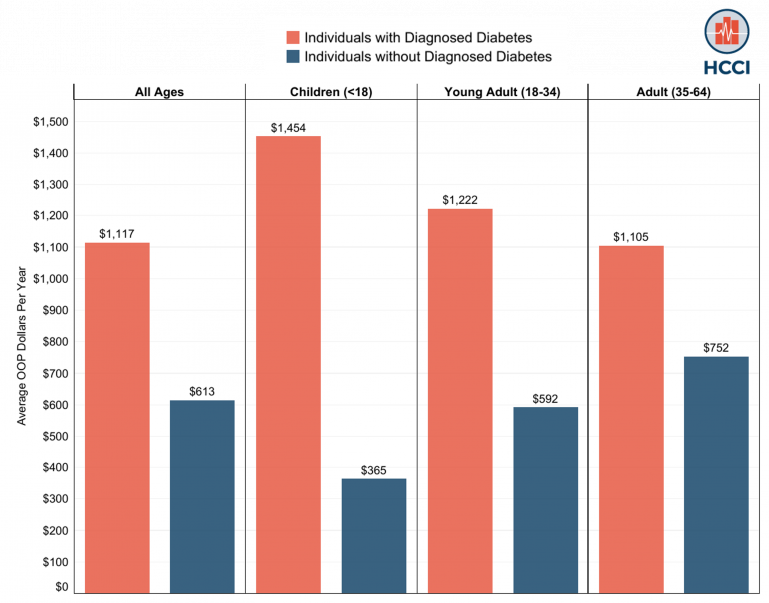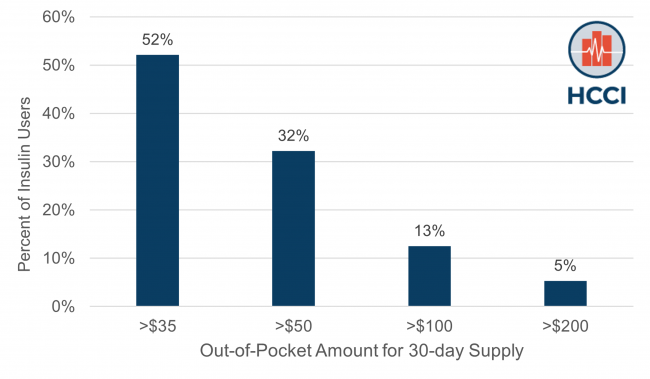Diabetes is a chronic health condition that affects over 10% of the U.S. population. It is possible for people who are diagnosed with diabetes to live a healthy, long life if the condition is managed properly. However, management often involves significant health care use, which can be costly for patients. Over the past few months, we used HCCI’s commercial claims dataset to examine total and out-of-pocket costs for people with diabetes compared to those without diabetes and to illustrate the potential effects of a cap on out-of-pocket spending on insulin among the population with health insurance through their employer (employer-sponsored insurance, or ESI).
Two charts highlight the main findings regarding out-of-pocket costs for people with ESI diagnosed with diabetes:
- Individuals with diagnosed diabetes spent more than $1,000 out-of-pocket on medical services in 2020.
- Over half of people with ESI who use insulin spent over $35 out-of-pocket on average for a 30-day supply of insulin in 2019 and 2020.
Figure 1. Individuals with diagnosed diabetes spent more than $1,000 out-of-pocket on medical services in 2020

On average, people with diabetes spent nearly twice as much as people without diabetes in terms of out-of-pocket spending ($1,117 vs. $613). This difference in out-of-pocket spending reflects the fact that individuals diagnosed with diabetes used many more health care services than those without diabetes.
Figure 2. Over half of people with employer-sponsored insurance who use insulin spent over $35 on a month’s supply

The Inflation Reduction Act (IRA) passed by Congress includes a $35 per month cap on out-of-pocket spending on any covered insulin product for those enrolled in Medicare Part D. A similar cap for ESI enrollees was proposed but ultimately excluded from the final version of the legislation. Our data shows that 50% of insulin users with ESI spent over $35 out-of-pocket on average for a 30-day supply of insulin in 2019 and 2020. Thus a cap such as that included in the IRA would help a substantial proportion of ESI enrollees afford insulin. This and other efforts to lower costs for people with diabetes to access all types of necessary care are critical to ensure that people and families are able to manage their care.
